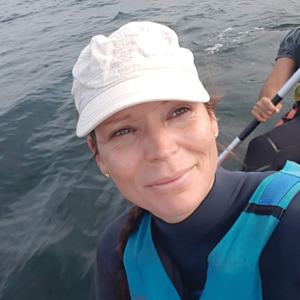 Incorporating site-specific metocean data into assessment of the impacts of O&M cost on the levelised cost of energy creates a better informed projection of project profitability.
Incorporating site-specific metocean data into assessment of the impacts of O&M cost on the levelised cost of energy creates a better informed projection of project profitability.By Claire Cohen, Principal Marine Energy Consultant, Black & Veatch, UK
By affecting the ability to undertake planned maintenance and reactive repairs, metocean conditions – wave, current and wind characteristics, etc. – have a significant impact on the effective O&M of offshore assets. Unless site-specific metocean data has been incorporated into a project’s early development, it is possible that the built assets may not be able to consistently achieve the performance forecast, because the ability of metocean conditions to hamper O&M activities has not been accounted for in sufficient detail.
For example, slightly higher wind yield means location A is preferred over location B because it offers a higher financial return. However, location A has a more difficult metocean environment than location B.
Location A’s environment makes maintenance more challenging as fewer suitable weather windows exist and/or more expensive access methods have to be employed. Unless this is accounted for during project development there is a risk that performance forecasts will not be achieved.
The result is that the slightly higher return forecast, due to location A’s higher wind yield, is eroded by suboptimal array performance stemming from an inability to ensure the required level of maintenance or significantly increased O&M costs.
Historically there has been an understandable focus on identifying the location that offers optimal wind yield and swiftly progressing design for that location. As a result the development team may not always have the fullest discussion with experts regarding the site-specific impacts of metocean conditions on O&M regimes and costs. This presents the possibility of ‘locking in’ substantial opex that could potentially have been reduced through greater early adoption of site-specific O&M considerations.
Developers are aware of the need to incorporate metocean data during planning. But the extent to which such data is accounted for from an O&M perspective, and the detail and sophistication of the data used, varies.
Modelling capable of accurately incorporating site-specific metocean data into the assessment of the effect of O&M costs and downtime on the levelised cost of energy (LCOE) will assist with the development of a more informed long-term projection of project profitability, aiding site selection and helping specific sites optimise their O&M strategies.
The modelling sophistication required to accurately calculate a project’s LCOE is possible by pooling datasets not typically analysed together and processing them using algorithms configured to inform data-driven O&M planning for site-specific conditions. Such datasets can include site-specific metocean data – e.g. wind, wave and current – analysed alongside equipment failure rates, OEM maintenance schedules and turbine power curves.
This level of sophistication is important because different metocean data are very complex and highly interdependent. Minor changes in design and location can cascade into significant effects on cost and performance, giving rise to potentially meaningful changes in a project’s bottom line. This aspect of project development is increasingly important as arrays are located ever further offshore with the risk of more challenging metocean conditions.








